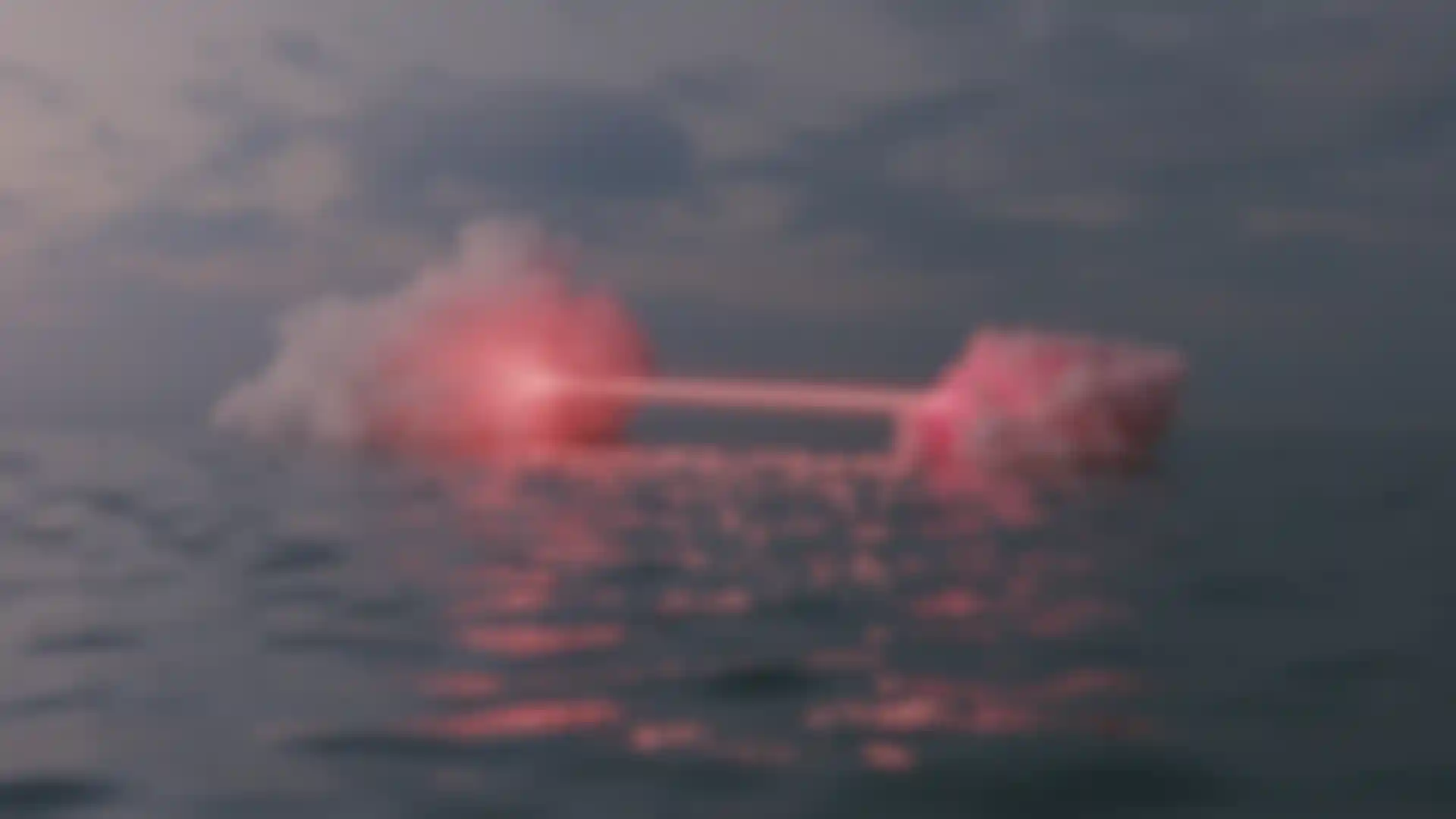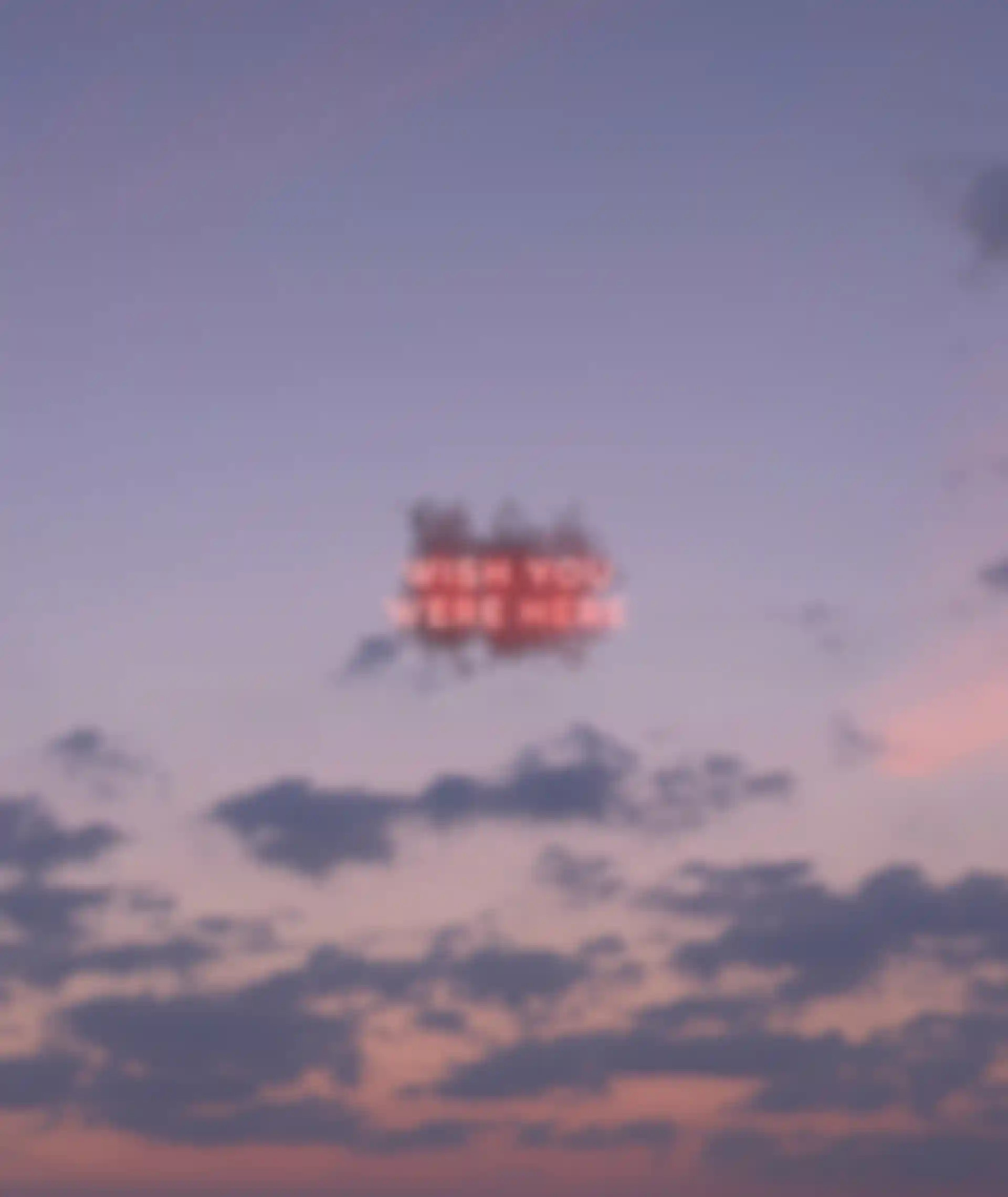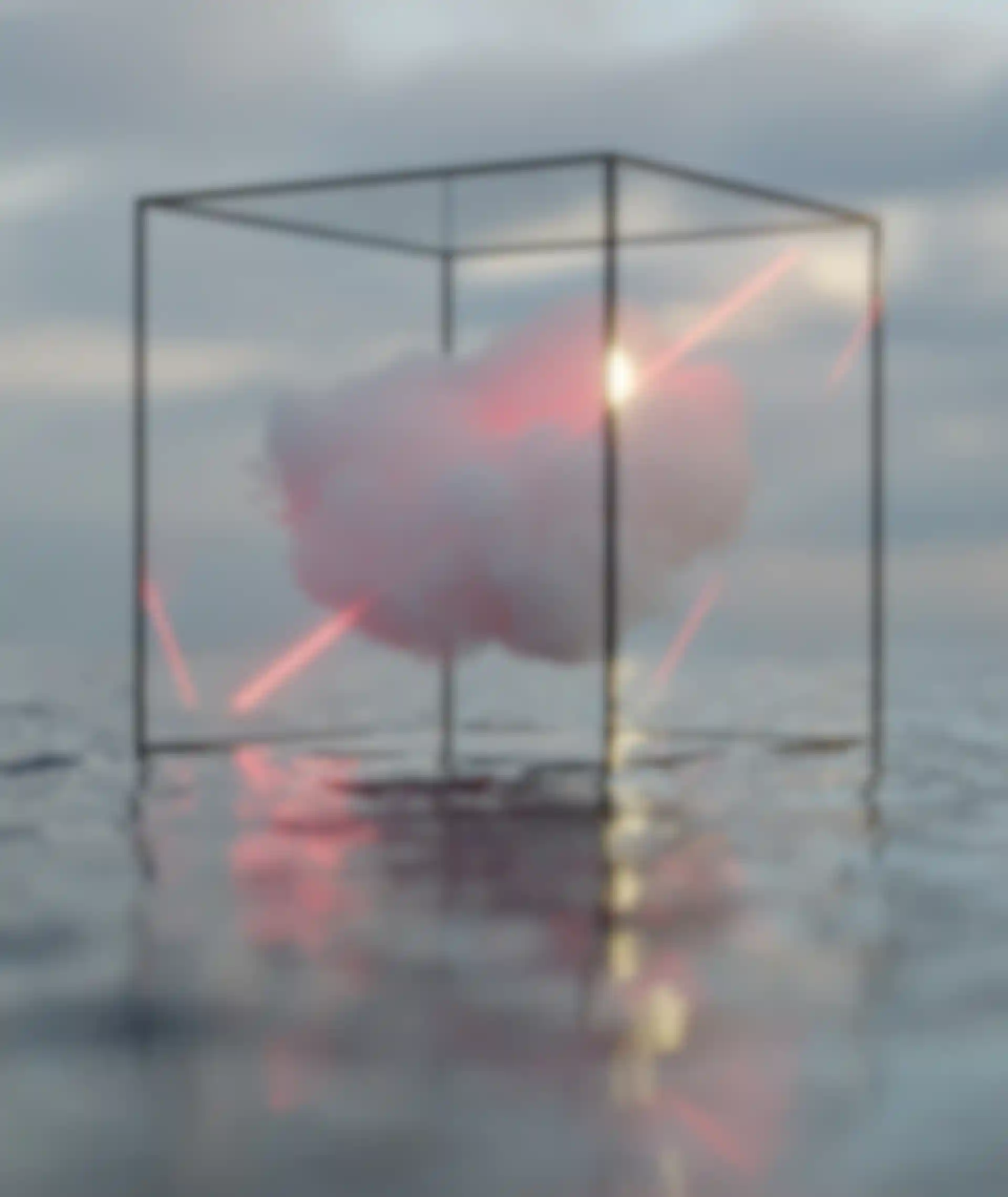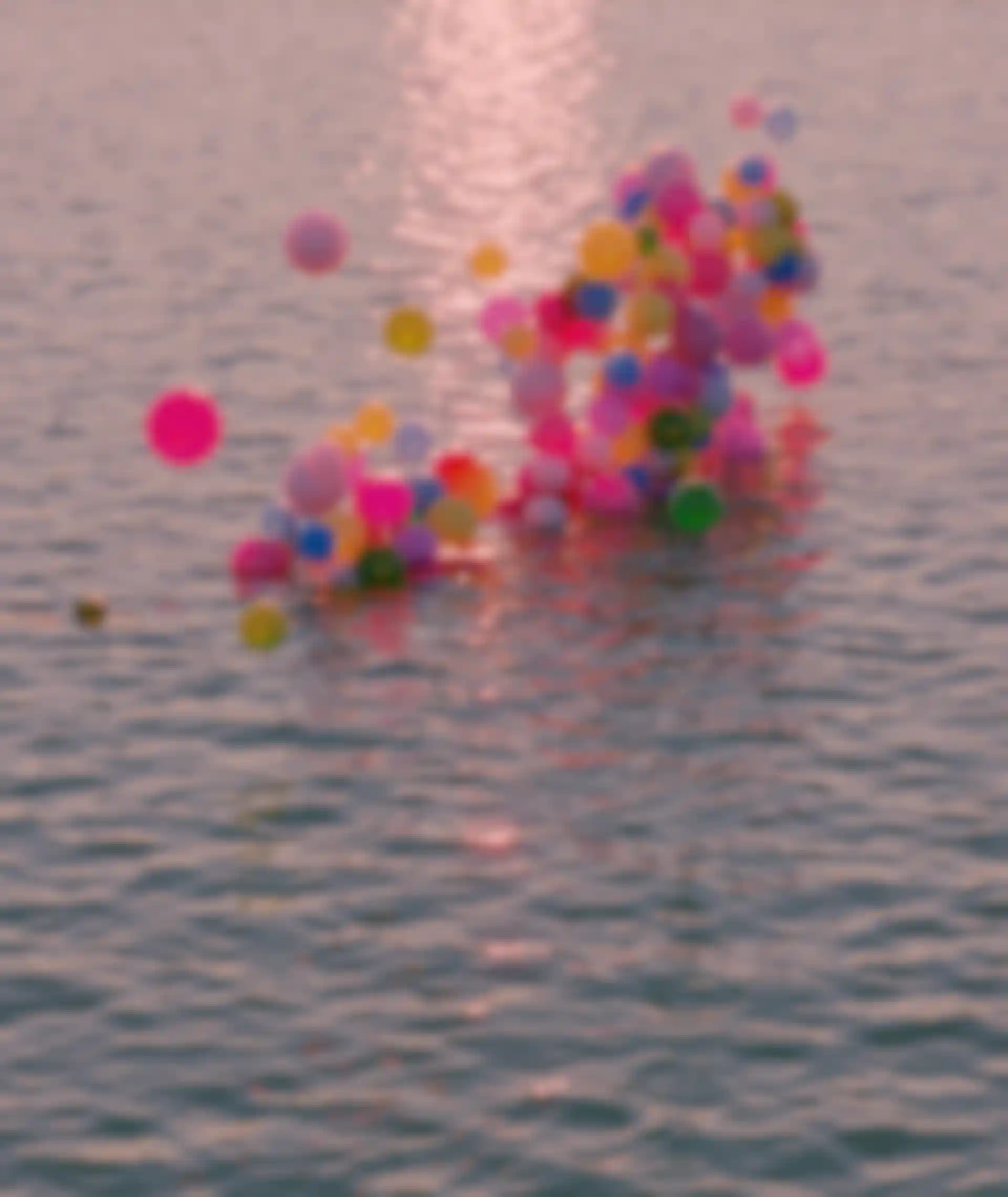
The Poetry of Images How Digital Artist David Stenbeck Uses C4D to Communicate in the Language of Light
Swedish digital artist David Stenbeck has been using Cinema 4D to create images that manage to be soothing and enigmatic, as well as straightforward and elusive since 2017. Powerful in their spareness, his images often combine a clean, photographic aesthetic with a sense of mystery. Colorful spheres float above rippling water? A thin, multicolored ring of neon rests atop a canopy of trees like a hula hoop discarded by a giant.
And then there are the expressive, almost whimsical messages that float in front of dusky clouds, hang above dark forests, and reflect in water. While other works read as melancholy postcards from the pandemic: “Wash Your Hands,” “Keep Your Distance,” and “Wish You Were Here.”

Though he was already an established artist, Stenbeck’s Instagram-friendly missives really took hold in 2020 as they the worldwide mood during the COVID-19 lockdown. Some of that work was showcased last summer by Jenn Singer Gallery, which held an online solo exhibition titled Cancelled Dates. Around the same time, Cosmopolitan magazine, commissioned Stenbeck to illustrate an article anticipating the eventual post-COVID return to normal life.
While his images are carefully controlled to be almost supernaturally clean and orderly compositions, he still regularly fools viewers who believe he is a photographer. Some even chastise him for what they perceive as transgressions against the environment. “Digital art right now is somewhere between the uncanny valley and people being irritated with me for letting out plastic balloons over the ocean, throwing junk in the sea and killing fishes,” Stenbeck says. “I have to tell them that it’s all digital art, made by me. Nothing is real.”
“I have to tell them that it’s all digital art, made by me. Nothing is real.”– David Stenbeck
From Poetry to Digital Art
Despite his skill with imagery, Stenbeck doesn’t fit any kind of typical C4D-artist mold. For one thing, he has no formal training. Instead, he wrote fables as a teenager before becoming interested in literary criticism and poetry as a young man. By the age of 30, Stenbeck was a published poet enjoying some degree of success as his work appeared in magazines and newspapers. Becoming a father changed things, spurring him to look for ways to expand his creative horizons, not to mention his income.

As a child, Stenbeck was mesmerized by the way light was reflected and refracted by transparent and translucent materials. That interest grew into a kind of language that he began using in visual arts and, almost by chance, he started experimenting with creating images in Cinema 4D. “I instantly found a connection to my poetic core, something to extend my poetics into the visual arts,” he recalls. “I was quite bad at the beginning, but I could see glimpses of a future to come.”
Asked about his process, Stenbeck explains that he feels his work relies on artistic sensibility rather than specific tools and techniques. “I want something to be very clear. So many people are incredibly skilled at 3D creation, and the majority of people working with digital art are much better technically than I am. For me, it’s always the poetics.”
He describes his creative workflow as straightforward, explaining that the more effort he puts into an image, experimenting with volumetrics and scattered light, the more likely he is to end up with nothing to show for the effort. “It’s sad math, but quite often it’s that way,” he says. “It helps that C4D offers an intuitive way of learning that sometimes delivers results by chance. That is so good and unexpected at the same time. I never use the word magic in work-related situations, but when you have an intuitive AI working for you, that’s the closest thing.
Though he primarily uses Corona Renderer to render most of his work at 300 dpi (he sells prints up to 60 x 50 inches), Stenbeck does use V-Ray occasionally and is working on learning it more deeply. In addition to prints, he also releases motion work, mainly short, looping images, which he plans to do more of in the future.
“It takes time to render a motion piece, and usually you don’t find out until you’re done if there is something wrong with your image,” he says, admitting that “when it comes to rendering power, I’m not as fully operational as I should be.” But that didn’t stop him, however, from creating UltraHavn, a motion piece that was on exhibit at the corner of 41st Street and 7th Avenue in New York City last year.
Meanings Behind the Work
Asked about the meaning of his work, Stenbeck offers generous responses. Those images of balloons over water? He can trace their genesis directly back to a day at the beach in Italy, sometime between 1988 and 1990. He was playing with his family, and he still remembers the way a pink, plastic ball caught the sunlight.
“It was one of my first reactions to the world, or the universe, as a larger place,” he says. “The sun was shining through the ball at maybe five percent transparency, not much, but giving it a glow and restoring it in the Mediterranean. It’s a moment paused, halted or dragged out into infinity. It’s a childhood memory, and a very happy one.”

Currently, Stenbeck is occupied with a historically based project—trying to remake a room from the 18th century funeral of the Swedish King Gustav III. “It’s a rebuilt church, and there are cypresses growing on the sides of the room,” he says explaining that there are many interesting and peculiar light designs because it was 1792, so everything was lit by fire, and there’s a north star in the center, up high. “I’m trying to remake that environment and atmosphere in Cinema 4D, not because of the visual aspect, but because of the poetic stuff, the heart of the space-time experience.”
While some of Stenbeck’s legion of followers likely appreciate the poetry behind his images, he thinks others may simply find meaning in his choice of colors and light. “Most of my followers are 24 to 35 years old, and I think many people think I am a very young person,” he says. “They would be surprised to know that I am a 42-year-old father having seriously senior concepts of life—walking in the forest, looking at trees, visiting cliffs and old monuments, reading books about kings. But that’s what I do currently. I’m finding myself in a new place in life.”